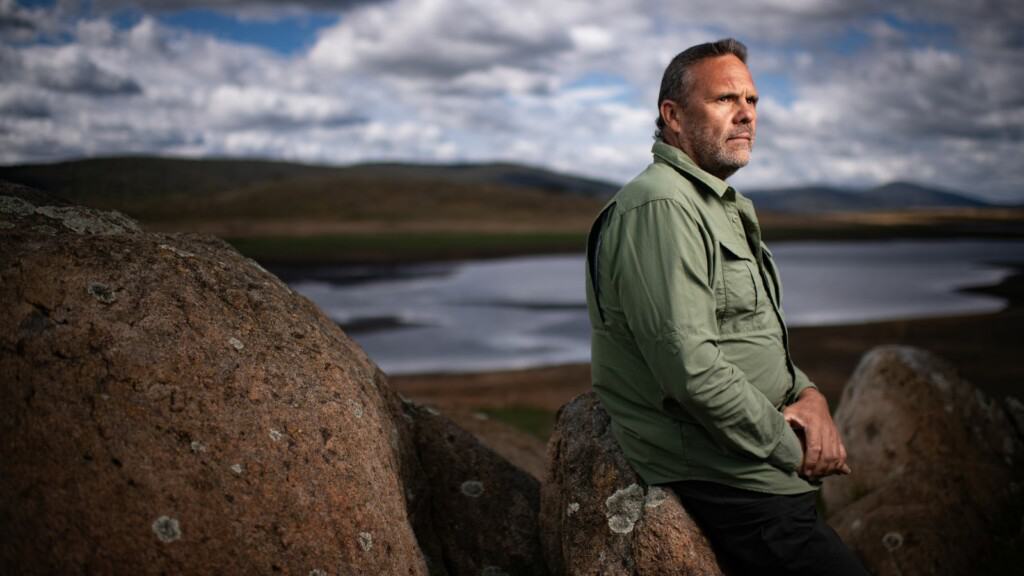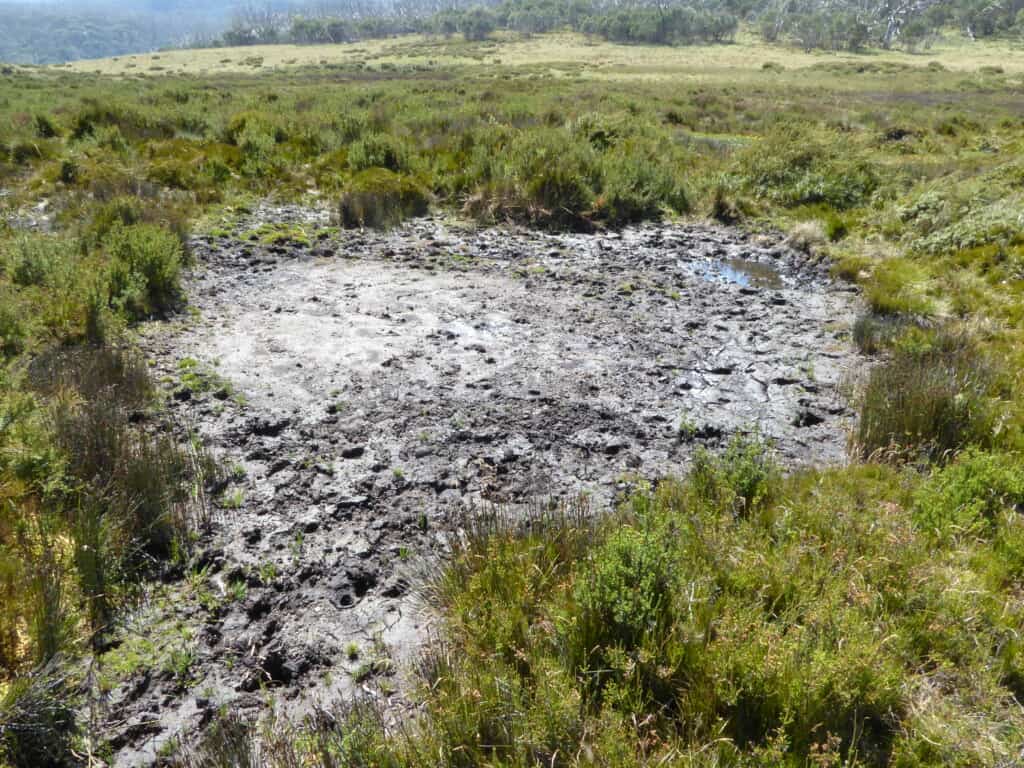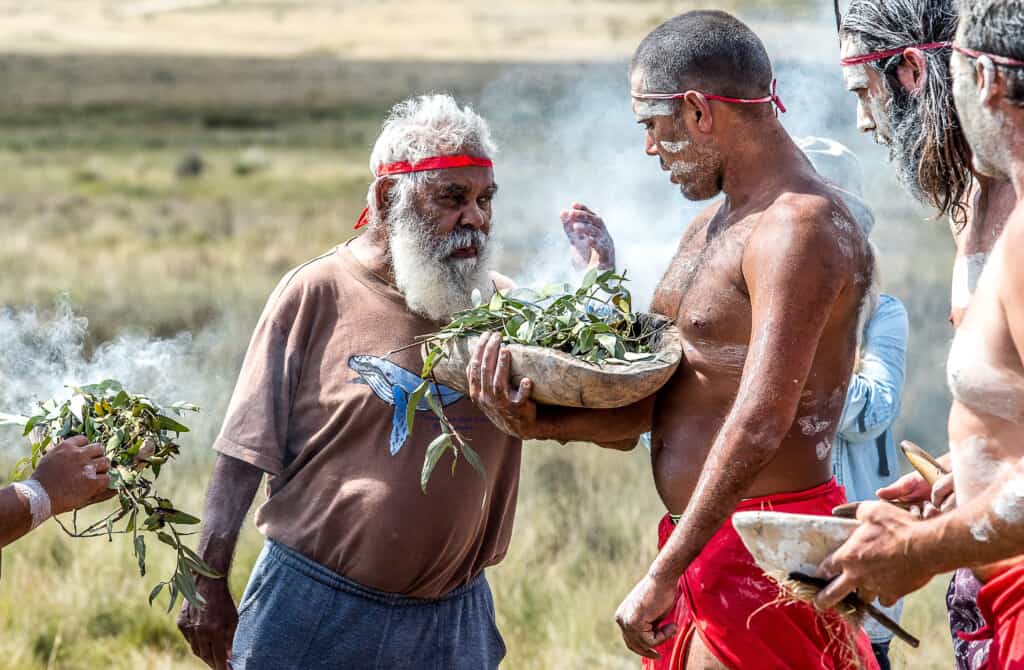We celebrated a huge win for nature last month, with aerial culling of feral horses finally allowed in Kosciuszko National Park. But how did the ban on this vital control tool even come about? And what’s next for the Reclaim Kosci campaign?
We spoke with Richard Swain, co-founder of the Reclaim Kosci campaign, to find out. Currently, Richard is the Invasive Species Council’s Indigenous Ambassador, Voice of Country program lead, and a Snowy River guide.
We had a pretty huge win for Kosciuszko National Park recently, can you tell us about that?
“The NSW state government is going to allow aerial culling of feral horses in Kosci, which will bring it in line with the current and best method for feral animal control. It’s already routinely used for the deer and the pigs and the other feral herbivores that are up there. So it’s really good news that there’ll finally be some effective control done on the horses.
It’s truly a win against irresponsible journalism because it’s always been the most humane method and backed by the ethics committees. But until now, it’s been off the table.”

Why has aerial culling been off the table for feral horses?
“Well it all started with the Brumby Bill. The [Kosciuszko Wild Horse Heritage] Bill was introduced by former NSW deputy premier John Barilaro in 2018. It was to protect the so-called heritage values of feral horses in Kosciuszko National Park. In other words they didn’t want to remove them, even if it meant their numbers growing out of control and destroying the environment.
And yeah, okay, people rode horses around the mountains, but it was never good for Country. You can’t throw hard-hoofed animals and ecological ignorance together for 150 years and think that’s going to be good for Country. It was never, never good for Country.
When this Bill to protect the feral horse passed parliament and became law, we were told not to even mention aerial culling. We were told it would never happen again. And we were pretty much told that the politicians were all afraid of it. And the media was only ever interested in “he said, she said” arguments and showing pretty horses on the high plains.
But we never gave up. We educated politicians and the media about the damage and we helped thousands of people have their voices heard. We had a Senate inquiry that was very conclusive that aerial culling is a method that needs to be employed. And now finally we’ve got an environment minister and a premier prepared to listen to science and stand up for Country by overturning the ban.”
How is it that we came to have a law that protected an invasive species over our native ones?
“Because former deputy premier John Barilaro wanted to please a small but very noisy minority in his electorate. And back in 2018 everyone else in the Liberals and Nationals fell into line. At the time, we spoke to so many Liberal and National politicians who knew this was a bad law and didn’t want to support it, but in the end Mr Barilaro got his way.
And the way the new law was written meant that the horse was protected over our native species, even though this goes against the NSW government’s environmental responsibilities. It included a clause that said the Wild Horse Heritage Management Plan took precedence if it collided with another plan or law, including environmental ones. And they had to do that, I’m guessing because it was always going to collide with every other plan, because every other plan’s about trying to save the native species.
So the end result of that is the feral horse took precedence over the native species.”

Is that why the Reclaim Kosci campaign started?
“Yeah that’s why Reclaim Kosci started – off the back of the Brumby Bill. It was the coming together of the Invasive Species Council, National Parks Association of the ACT, National Parks Association of NSW, Colong Foundation for Wilderness and Nature Conservation Council of NSW to stop it.
And me, I was just a river guide who got cranky about it and was ringing everyone I could. That’s how I got into the political stuff. I’d been in this battle on social media and locally, but I hadn’t bothered to join a group as such. But this really upset me, this Brumby Bill.
And since then we’ve had hundreds of volunteers, donors, scientists and organisations back the campaign and make it successful. The Invasive Species Council has led the way and people like Linda Groom and Professor Jamie Pittock have stood up and made sure politicians couldn’t ignore us.”

Can you tell us about the impact invasive species – and in particular feral horses – have had on Country and Indigenous culture in Kosci?
“Yeah Indigenous cultures are a bigger question than people think.
But we could start with the artefacts on the ground. The artefact scatters are often in nice little flat meadows. And as you can imagine, in hilly country, a nice little flat meadow is where people used to sit and make stone tools, etc. But now it’s where horses like to sit and dust and bathe and dig and poo. So in some places you’ve got to dig through six inches of horse poo to get to the artefacts.
Then there’s the phragmites. The women on the Murray and maybe the Snowy used to make their rafts out of phragmites because, if you look at them closely, they’re like little mini bamboos, so they trap the air. But now, phragmites are basically non-existent.
And then you’ve got things like the kurrajong tree. So the kurrajong is an ice cream species to the horse and the deer. And so they’re basically eaten out of that environment.
Kurrajong is an important tucker, but what it’s really good for is making string. So, you know, Aboriginal Australians were known for their string making and their basket weaving and the quality of their netting and everything. And around here, the best fibre for that was kurrajong.
But you won’t find a sapling kurrajong up there. Like you actually have to go right into the campgrounds and only around the toilet blocks where the horses and the deer don’t frequent if you want to find a sapling. And that’s what you need, the saplings to make string, etc.
And then basically the native yams, the native lilies, the orchids, everything’s hiding out under a rock. It’s like the plants that are left are hiding. They’re hiding out. They’ve had enough.”
What’s next for the Reclaim Kosci campaign?
“Well hopefully this aerial cull can go off without a hitch. I hope all of us can get behind Minister Sharpe and the science because if we can get this through and they knock the horses down to 3000, well, I don’t like to talk numbers. I like to talk impacts.
If at the end of this cull the impacts are still far too great, we’ve got to keep going. Until the impacts are negligible. And that may be that there’s some horses left there, but it may be that there’s none, but either way it’s gotta be about impacts, not about numbers.
And then obviously the big one is that the [Kosciuszko Wild Horse Heritage Management] Act needs to be repealed. You know, Australia’s not afraid to embarrass itself. We saw that two weeks ago with the referendum defeat. But it’s an international embarrassment to be protecting a feral animal over and above native species.
We have local MPs now, Joe McGirr in Wagga Wagga and Steve Whan in Monaro, who are champions of action on this issue and want to see the numbers come down. That gives me hope that the law will be overturned.
And I think the day that the actual horse protection law is repealed, that will be a day to celebrate. I don’t like celebrating the death of a lot of animals, no matter what type, but repealing the law is something I’d crack a toast to.”

